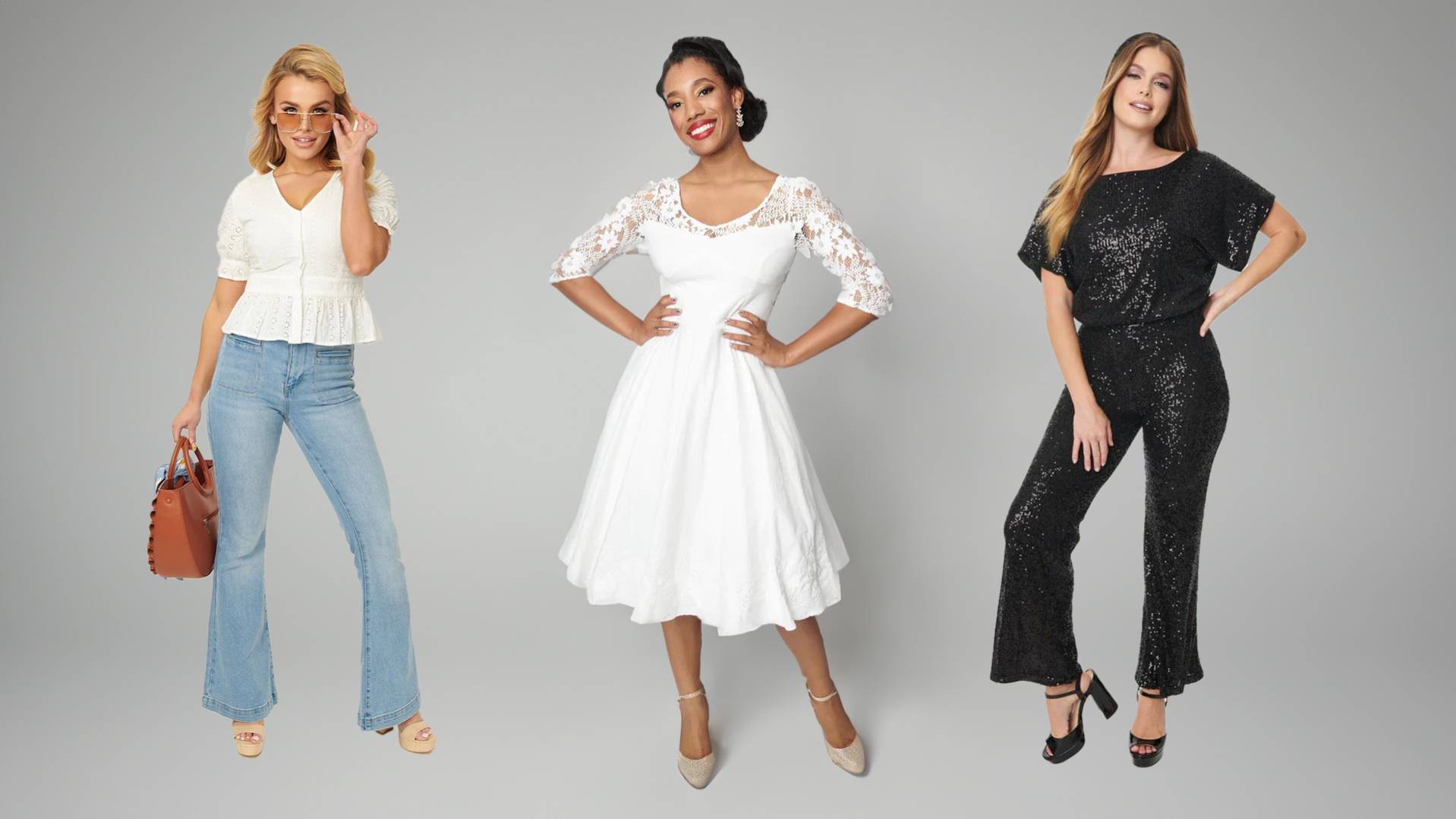The Role of Fabric in Defining Quality in Branded Clothing
The Role of Fabric in Defining Quality in Branded Clothing
Blog Article
Understanding Apparel: The Importance of Material Choices in Your Closet
The option of textile in apparel plays a pivotal role in both aesthetic appeals and functionality. Different products provide varying degrees of longevity, convenience, and breathability, straight influencing the user's experience. Recognizing these subtleties can enhance one's wardrobe markedly. Yet, several neglect exactly how these selections can affect not just individual style, yet additionally sustainability. What fabric choices could redefine your wardrobe and align it with both style and duty?
The Function of Textile in vogue and Capability

Usual Textile Kinds and Their Features
When selecting clothing, understanding the characteristics of typical material types is crucial for making educated selections. Cotton, a widely-used all-natural fiber, is understood for its breathability, flexibility, and softness, making it appropriate for sportswear and day-to-day garments. Bed linen, an additional natural alternative, boasts excellent moisture-wicking residential properties and a distinctive structure, suitable for cozy climates.Wool, often preferred for its heat and longevity, differs in excellence; merino wool is soft against the skin, while coarser kinds are utilized for outerwear. Artificial materials like polyester and nylon provide sturdiness and resistance to creases, making them prominent for activewear and travel garments. Blends, which incorporate natural and synthetic fibers, can boost performance while preserving convenience. By identifying these material characteristics, people can choose clothes that straightens with their lifestyle and aesthetic preferences.
Breathability and Convenience: Picking the Right Fabrics for Various Climates
Picking the ideal textiles for numerous climates can greatly boost comfort and general wearability. Breathable materials are necessary in hot climates, as they permit air blood circulation and wetness evaporation. Fabrics such as cotton, linen, and moisture-wicking synthetics effectively attract sweat away from the body, maintaining the user cool and completely dry. On the other hand, in colder environments, thicker fabrics like woollen or fleece provide insulation while keeping breathability, guaranteeing warmth without overheating.Additionally, the selection of textile weight plays an important duty; lightweight textiles are preferable for summer season, whereas heavier alternatives are matched for winter months wear. Understanding the distinct residential or commercial properties of each fabric allows individuals to clothe properly for differing weather problems. Inevitably, choosing breathable and comfortable fabrics customized to certain environments can significantly boost day-to-day convenience and enhance the total experience of putting on clothes.
Sturdiness and Treatment: Just How Material Impacts Long Life of Your Wardrobe
Selecting the best materials can greatly impact the toughness and care requirements of a wardrobe. Fabrics such as cotton and polyester are understood for their durability and simplicity of upkeep, making them ideal for daily wear. In contrast, fragile products like silk and lace call for more mindful handling and specialized cleaning methods, which can increase the moment and effort required for care. Branded Clothing.Durability is also influenced by the material's weave and surface; firmly woven materials often tend to resist damage far better than freely woven choices. In addition, artificial blends frequently give enhanced longevity, integrating the best qualities of multiple fibers.Understanding the care guidelines for each fabric is vital, as incorrect cleaning or drying can bring about early wear. Inevitably, selecting durable products can bring about a longer-lasting closet, decreasing the frequency of substitutes and adding to a more sustainable style option
The Influence of Material on Fit and Silhouette

Sustainable Textile Choices: Making Eco-Friendly Decisions
The influence of material expands past fit and silhouette to encompass ecological factors, motivating an expanding passion in lasting textile selections. Green fabrics, such as organic cotton, hemp, and Tencel, are obtaining grip home amongst customers that prioritize sustainability in their closets. These materials are usually generated with less chemicals and water, lowering their eco-friendly footprint.Additionally, recycled fabrics, made from post-consumer waste, offer a cutting-edge service to the fabric market's contamination trouble. Brands significantly accept transparency in their sourcing techniques, permitting consumers to make educated decisions concerning their purchases.Choosing sustainable fabrics not only supports ethical practices yet likewise encourages the apparel industry to take on even more liable production methods. As understanding of ecological issues climbs, people are advised to mirror on the long-lasting impact of their material options, promoting an activity in the direction of an extra ecologically mindful and sustainable method to style.
Raising Design: Just How Material Can Change an Attire
While numerous may concentrate on color and cut when picking an outfit, the option of fabric plays an important role in elevating style and enhancing overall look. Different materials communicate unique state of minds and messages; for instance, silk radiates high-end and elegance, while denim offers an informal, loosened up vibe. The appearance and drape of a fabric can drastically alter the shape, with structured fabrics providing a polished appearance and softer ones producing an extra fluid, relaxed aesthetic.Moreover, the weight of the textile affects wearability throughout periods. Light-weight fabrics Check Out Your URL like bed linen and cotton are suitable for summertime, while larger products such as wool and velour give warmth and beauty in chillier months. Comprehending textile homes, such as breathability and stretch, also equips people to make enlightened selections that boost comfort without endangering style. Inevitably, the ideal material can change a clothing from normal to remarkable, making it a vital factor to consider in any type of wardrobe.
Frequently Asked Questions
Just how Do I Recognize the Textile Material of My Apparel?
To recognize fabric web content, one can take a look at care tags, conduct melt tests for fiber identification, or speak with fabric examples. These methods aid separate materials, ensuring notified choices for apparel treatment and maintenance in daily wear.
Can Fabric Option Affect My State Of Mind or Self-confidence?
Textile selection can considerably affect an individual's mood and self-confidence. Branded Clothing. Particular materials may evoke feelings of comfort or style, while others can really feel uncomplimentary or restrictive, eventually influencing self-perception and psychological well-being throughout the day
What Fabrics Are Best for Delicate Skin?
For individuals with delicate skin, natural fabrics like linen, bamboo, and cotton are usually advised. These materials are breathable, hypoallergenic, and less most likely to cause irritability, making them appropriate choices for comfort and skin health and wellness.
Exactly how Do I Properly Laundry and Look After Various Fabrics?
To correctly wash and care for various fabrics, one must think about each material's particular demands, including temperature settings, detergents, and drying techniques, guaranteeing long life and preserving the textile's original qualities for ideal usage.
Are There Particular Fabrics for Athletic or Performance Put On?
Athletic or performance wear commonly utilizes fabrics such as polyester, spandex, and nylon. These products are created for moisture-wicking, breathability, and versatility, boosting movement and comfort during exercises while supplying resilience and assistance. On the other hand, in chillier climates, thicker materials like wool or fleece supply insulation while keeping breathability, guaranteeing heat without overheating.Additionally, the pop over to these guys option of textile weight plays a vital role; lightweight materials are preferable for summer, whereas heavier alternatives are matched for winter wear. In contrast, delicate materials like silk and lace need even more mindful handling and specialized cleansing approaches, which can boost the time and initiative needed for care.Durability is likewise affected by the material's weave and finish; tightly woven materials often tend to withstand wear and tear much better than loosely woven options. In contrast, stiff textiles can limit activity yet supply a classic, sleek look.Moreover, the density and structure of the fabric can affect the aesthetic perception of body form. The impact of textile expands past fit and shape to incorporate ecological factors, triggering a growing interest in sustainable textile selections. The appearance and drape of a textile can considerably alter the shape, with organized fabrics offering a polished appearance and softer ones creating a much more fluid, kicked back aesthetic.Moreover, the weight of the material influences wearability across periods.
Report this page